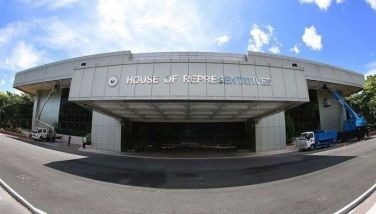Japan-funded SCTEx set to spur growth in Central Luzon
The dream of turning Central Luzon into a major economic center nears realization with the forthcoming opening of the 93.7-kilometer Subic-Clark-Tarlac Expressway (SCTEx) by the second quarter of 2008.
The SCTEx is divided into two segments. The Subic-Clark segment has a distance of 50.5 kms while the Clark-Tarlac segment is 43.27-kms.
The SCTEx will conveniently link two of the country’s premier economic zones Subic Bay Freeport and Clark Special Economic Zone. This will practically transform the two economic zones into one big facility where investors can now take advantage of using the seaport in Subic and the Diosdado Macapagal International Airport (DMIA) in Clark. The expressway will also allow better access to the Bataan Technology Park in Morong, Central Techno Park in Tarlac and the various tourist destinations in Central Luzon.
Travel time from Clark to Subic will be reduced to 30 minutes only. Northbound motorists, on the other hand, will find it very convenient to use the Clark-Tarlac segment and exit at La Paz, Tarlac bypassing the various traffic-laden towns. Travel time from Clark to La Paz, Tarlac is only 20 minutes.
This P21-billion, four-lane tollway project—initiated and being overseen by state-run Bases Conversion and Development Authority (BCDA)—is expected to merge the resources of the provinces and key cities of the region to promote not just economic and industrial growth, but also agriculture and tourism.
With the help of almost 50 bridges, interchanges, and underpasses—SCTEx will be able to tap the full potential of Central Luzon’s fertile yet relatively underutilized “great plains” and open up the region to the rest of the country, the Asian market and the world.
However, creating a new gateway to the international market proved to be a daunting and expensive task.
And true enough, the SCTEx became BCDA’s biggest and most expensive project to date, prompting the Authority to seek — for the first time — foreign financial help from the Japan Bank for International Cooperation (JBIC).
In the past, BCDA financed all its infrastructure projects in Fort Bonifacio, Clark, Baguio, and La Union through internally generated funds.
Japanese ODA assistance
In the end, BCDA chose to propose the project to JBIC after Japan’s then Prime Minister Obuchi Keizo offered the Philippine government several “generous” loan terms, which were “much attuned to the financing requirement of BCDA.”
BCDA’s choice was not much of a big surprise, though, since Japan is the Philippines’ biggest source of official development assistance (ODA) for the past 23 years mostly in the form of loans administered by the JBIC.
As of December 2006, JBIC remained the country’s most generous ODA lender, accounting for 49 percent of total ODA loans followed by the Asian Development Bank (ADB) and the World Bank (WB).
An ODA is an “aid” in the form of grants, technical cooperation, or loans extended to promote economic growth among developing countries. ODA loans offer lower interest rates than regular commercial loans.
In the case of Japanese ODA funds to the Philippines, project proposals are submitted by government agencies and LGUs to the National Economic Development Authority (NEDA) for evaluation. Once approved, the Philippine government extends an official loan request to the Japanese government. JBIC assesses the projects and approves those they deem viable, mature, and necessary.
Low rate of paved roads
A 2000 study provided by the Philippine government for JBIC for the SCTEx Project (SCTEP) revealed that more paved roads and highways and a more efficient road network, particularly in Central Luzon, are badly needed if the region intended to promote integrated and sustainable regional development.
“As of 1998, rates of paved roads for the country as a whole and the region were 71 percent for trunk roads and 47 percent for secondary national roads,” the study showed.
Both JBIC and BCDA agreed that more roads in the region can actually provide cheaper and more efficient transportation and movement of goods, services, and people, which, in turn, can attract more investors, and businesses and create employment.
After further consultation with the Philippine government, field visits to the project site, and project appraisal, JBIC approved the loan to BCDA in September 2001.
“After evaluating the project using the usual parameters such as the economic, technical, social, and environmental aspects…we were convinced that this project is really viable so we agreed to extend the financing,” JBIC said.
JBIC found the SCTEP’s objectives to be in accord with the priority areas of its “Medium Term Strategy for Overseas Economic Cooperation Operations (OEPEC) for the Philippines”.
The OEPEC was formulated by JBIC in 1999 after the Japanese and Philippine governments agreed earlier on numerous medium and long-term priority assistance areas, which included strengthening of the country’s economic structure through the creation of more economic and social infrastructures like roads, bridges and railways.
Yen loan secured
BCDA secured an ODA loan amounting to Y41.9-billion. It was used to fund the P21-billion construction cost of the SCTEx and other expenses such as consulting services on detailed and construction supervision. BCDA, on the other hand, funded the remaining costs such as payment for right-of-way, taxes and project administrative expenses.
The loan was extended from the Special Yen Loan Package (SYLP), which Japan instituted in 1998 to help countries, like the Philippines, recover from the 1997 Asian Crisis by promoting projects that can stimulate economic growth. SYLP, now known as Special Term for Economic Partnership (STEP) offers a more gracious term compared to other standard yen loans.
Construction eventually began in April 2005. The joint venture of Kajima Corp., Obayashi Corp., JFE Engineering Corp., Mitsubishi Heavy Industries Ltd. (KOJM) is building the Subic-Clark stretch, while Hazama-Taisei-Nippon Steel joint venture is finishing the Clark-Tarlac segment.
According to NEDA figures, to date, the SCTEP is the recipient of the biggest JBIC loan among other Yen-loan funded Philippine projects — a testament to JBIC’s faith and confidence in the project.
JBIC’s continued support pours even more in this recent statement by JBIC Manila chief representative Hiroshi Togo: “JBIC is proud to have contributed to the realization of [SCTEP]…The completion of the Clark-Tarlac segment of SCTEP is a big leap forward towards the ultimate goal of providing seamless connection among prime economic zones in the region.”
The loan (which BCDA describes as “practically a give-away”) is payable in 40 years, 10 years grace period with an annual interest rate of 0.95 percent.
While BCDA hopes to pay the loan via the generated toll revenues, repaying the loan is actually a foregone conclusion. Right now, BCDA, just like JBIC, is looking forward and focusing more with making the expressway serve its purpose of being a catalyst for development in the region. — Vincent V. Quetulio
- Latest
- Trending
































